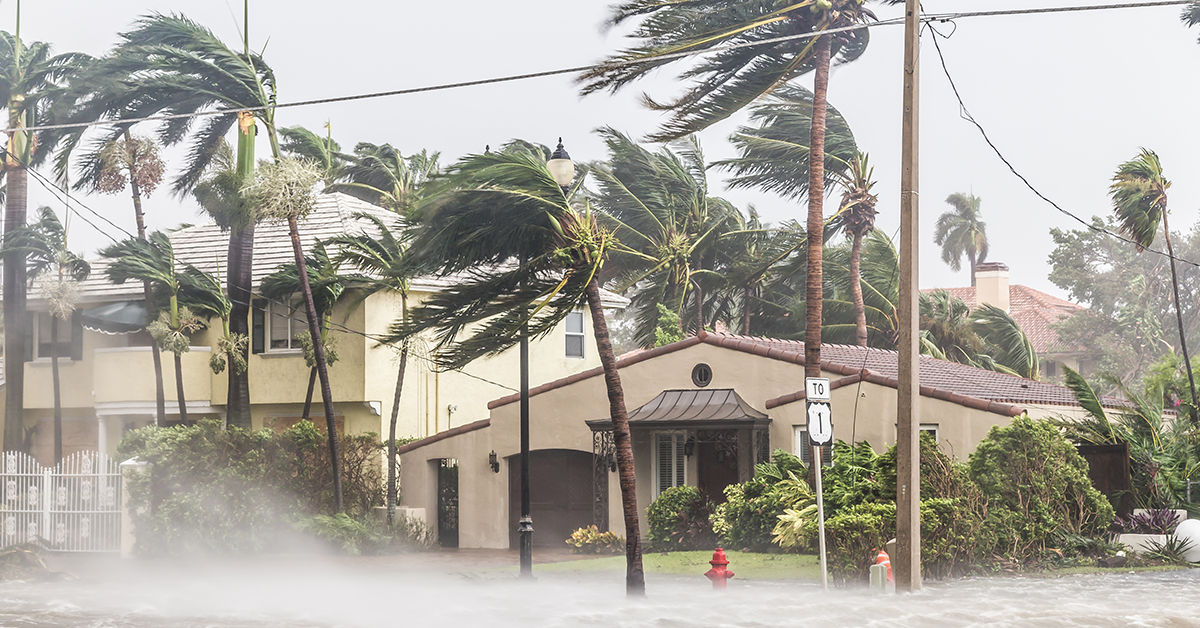Not only did interest rates continue to climb in fourth- quarter 2022, but impacts from Hurricane Ian resulted in a 31% decrease in Florida mortgage applications, compared to an overall decline of 14% nationwide, according to the Mortgage Bankers Association’s weekly application survey.
Just when it feels like mortgage sentiment could not get any worse, Hurricane Ian’s immediate impact to Florida’s loan origination business is dire and could potentially manifest in an inflection point when it comes to climate concerns. With inflation at a 40-year high, interest rates rising above 7%, and labor and materials still in high demand,
CoreLogic reported that the country is at a crossroads when dealing with risk management for properties subject to extreme climate events.
The true cost of Hurricane Ian may be much more significant not only in total dollars but in its true impact to the mortgage origination market in Florida.
Mortgage originators in Florida will closely watch rebuilding efforts across the state after this hurricane, along with what type of future resiliency standards will be required and at what cost. Meanwhile, originators in other areas of the U.S. that are at risk of extreme climate events could be watching warily for what happens in the Sunshine State.
Coastal allure
Dubbed the most hurricane-prone state, Florida has seen eight major hurricanes — Category 3 and higher — since 2000, meaning that Floridians endured storms with 100 mph-plus winds each of these times. And with oceans forecasted to warm, the intensity and frequency is only expected to increase.
In 2009 and 2020, the Federal Emergency Management Agency (FEMA) and the Florida Division of Emergency Management partnered to run “Phoenix,” a simulation of a Category 5 hurricane hitting Tampa Bay.
The results were devastating: 30,000 missing, another 300,000 seeking shelter and $200 billion in damages.
Although a majority of Americans now believe that climate risk is increasing, many appear undeterred by these concerns, lured by Florida’s coastal beauty and lack of a state income tax. Americans among the thousands headed to Florida in 2021, per the 45th annual National Movers Study published by United Van Lines, which ranked Florida No. 5 for inbound migration. What these newcomers might not have realized, however, is that a storm has been brewing in Florida — and it is not named Ian.
Costly insurance
Prior to Hurricane Ian’s landfall this past fall, the annual cost of a homeowners insurance policy in Florida
was forecasted to reach $4,231 this year, which is three times higher than the U.S. average, according to the Insurance Information Institute. As a result, human interest stories from local media chronicle the struggle of property owners to afford and maintain insurance coverage.
A regular homeowners policy does not include flood insurance. Currently, only 18% of Florida homes have flood insurance, prompting President Joe Biden to state that many in Florida will need to rely on FEMA grants to rebuild. As a result of losses and liquidity issues, in 2022 alone (prior to Hurricane Ian’s landfall), six homeowners insurance providers became insolvent while many others are on the brink.
In July 2022, the Florida Office of Insurance Regulation placed 27 companies on a watch list due to financial-stability concerns. Florida’s insurer of last resort, Citizens Property Insurance Corp. (which is backed by the state and established by the Florida Legislature to protect homeowners who are unable to obtain coverage in the private market) recently reached 1 million policies as a result of affordability and coverage concerns.
Hefty price tags and insolvent insurance companies, however, aren’t the only thing current and future Floridians have to worry about when it comes to homeowners insurance. Apparently, Florida insurers aren’t effective at paying claims in general. The state is responsible for a whopping 79% of the nation’s homeowners insurance lawsuits while only accounting for 9% of all claims.
And of the $51 billion that was paid out by Florida insurers over the past 10 years, 71% went to legal fees and public adjusters. So, when hurricanes arrive and a homeowner has coverage, a tug of war ensues with insurance providers, with the homeowner left holding the bag until the matter can be resolved, typically through litigation.
Unaffordable rebuild
With CoreLogic estimating that losses from Hurricane Ian could total between $41 billion to $70 billion for both insured and uninsured wind and flood damage, the storm could be the death knell for many of these insurance providers. And if you add in severe labor shortages, supply shortages and wage inflation, the true cost of Hurricane Ian may be much more significant not only in total dollars but in its true impact to the mortgage origination market in Florida. This also will be true in other areas impacted by the increased frequency and intensity of climate events.
Although the first social media posts after Ian’s landfall lauded messages to rebuild, what will be the true appetite once people are in position to rebuild? Structures will need to be able to withstand a Category 5 hurricane like the one simulated in the FEMA-backed Phoenix project. Ian impacted both modest and luxury residences. For example, Lee County was devastated by the hurricane and about 100,000 of the 400,000 homes in the county are long- or short-term rentals.
Mortgage industry insiders know that individual and institutional investors comprised 16% to 24% of all U.S. home sales in 2020 and 2021. From a demand perspective, who will be able to afford these properties to either reside in or to elicit passive income when the price tags might include a total-loss scenario in a labor market that may not improve?
A perfect storm of inflation, labor shortages, interest rate hikes, insurance risks and extreme weather events has hit the mortgage industry in Florida. One has to wonder about its impacts to not only Florida but the industry at large. ●
-
Melody Wright is senior vice president of product strategy and business development at Inflooens, a mortgage technology company. A 24-year industry veteran, Wright worked in the first part of her career on operational effectiveness at multiple large nonbank servicers. Wright currently focuses on mortgage fintech and macroeconomics, working hand in hand with clients to design and implement integrative solutions in mortgage origination and servicing that will be successful amid the ever-evolving economic landscape.
View all posts






